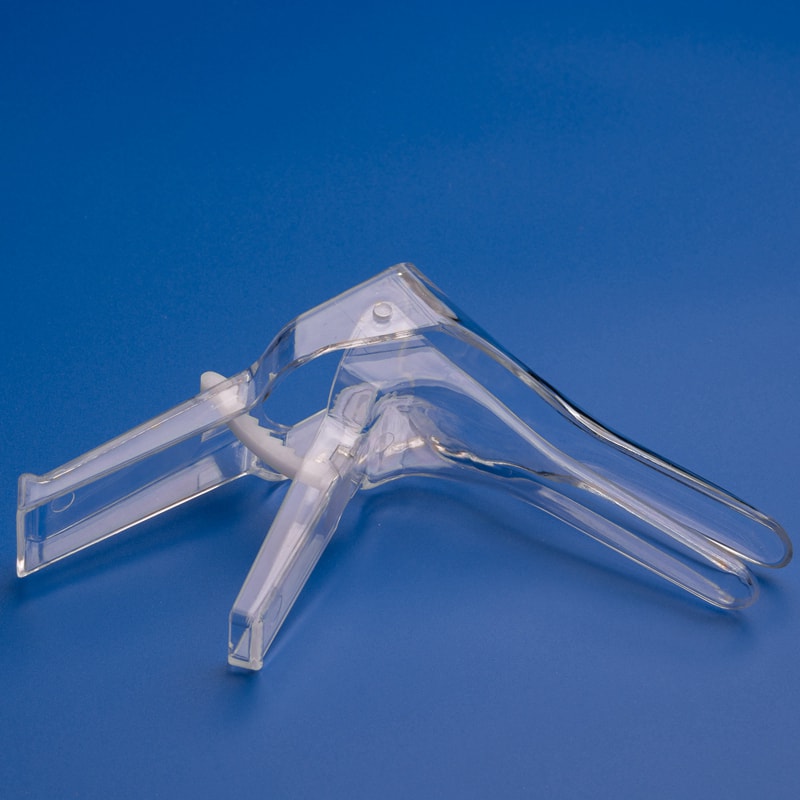The Impact of COVID-19 on the Global Swab Supply Chain (Lessons Learned)

Teilen Sie
1. Introduction: Why the Swab Supply Chain Became Critical During COVID-19
The COVID-19 pandemic brought unprecedented attention to the global healthcare infrastructure, especially the supply chain for medical testing consumables like swabs. These seemingly simple items—nasal swabs, throat swabs, and other diagnostic sampling tools—became the cornerstone of pandemic management, enabling widespread testing and early detection of infections.
The Unexpected Demand Surge
As testing ramped up globally, demand for swabs skyrocketed almost overnight. According to data from the World Health Organization (WHO), over 7 billion COVID-19 tests were conducted globally by the end of 2022, each requiring at least one swab. This exponential demand strained existing supply chains, revealing vulnerabilities in manufacturing capacity, logistics, and raw material sourcing.
Why Swabs Matter in Diagnostics
Swabs serve as the primary tool for collecting respiratory specimens, which are then tested for viruses like SARS-CoV-2. The quality and sterility of the swab directly affect testing accuracy and patient safety. Therefore, ensuring a consistent supply of high-quality swabs was—and remains—essential for effective pandemic control.
Swabs in B2B Healthcare Supply Chains
In the B2B medical ecosystem, swabs are supplied to:
- Krankenhäuser und Kliniken
- Diagnostiklabore
- Government agencies
- E-commerce platforms supplying medical institutions
- Distributors handling bulk orders
For wholesale buyers and medical distributors, ensuring continuity in swab supply became a top priority during the pandemic.
2. Global Market Disruption: COVID-19’s Impact on Swab Manufacturing and Distribution
COVID-19 disrupted nearly every aspect of the swab supply chain, from raw material availability to international shipping logistics. Understanding these disruptions is critical for wholesale buyers and distributors looking to build more resilient procurement strategies.
Supply Chain Breakdown: A Timeline
| Period | Key Disruption |
|---|---|
| Q1 2020 | China lockdowns halted major production facilities |
| Q2 2020 | Demand for nasopharyngeal swabs exceeded supply |
| Q3–Q4 2020 | Air freight bottlenecks delayed international orders |
| 2021 | Raw material shortages (PP, Nylon, flocked fiber) |
| 2022 | Global logistics costs surged by over 300% |
Manufacturing Bottlenecks
Most swab production is concentrated in a handful of countries, including the U.S., Italy, and China. When China—the world’s largest producer of medical consumables—entered lockdown, it created a massive bottleneck. Smaller manufacturers couldn’t scale fast enough, and countries with limited swab production capabilities faced severe shortages.
Export Restrictions and Trade Barriers
Many governments imposed temporary export bans on essential medical supplies, including swabs. This led to:
- Fierce competition among countries for limited supplies
- Price inflation in the B2B swab market
- Disrupted international wholesale contracts
Auswirkungen auf B2B-Käufer und -Händler
For B2B stakeholders, the disruptions meant:
- Missed delivery timelines
- Lost contracts due to inventory shortages
- Increased costs for bulk procurement
- Urgent need to diversify supply sources

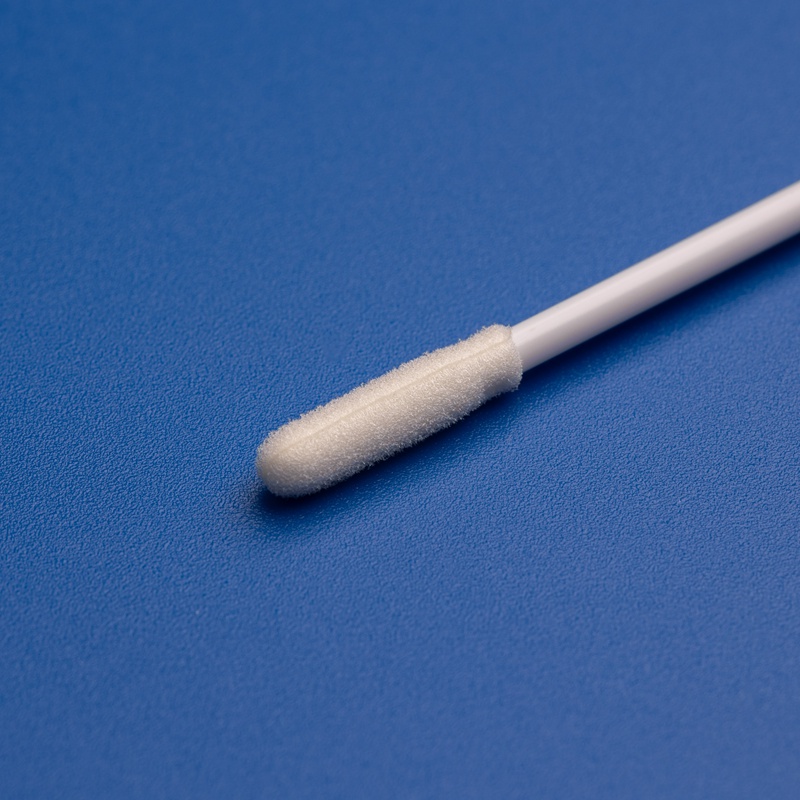
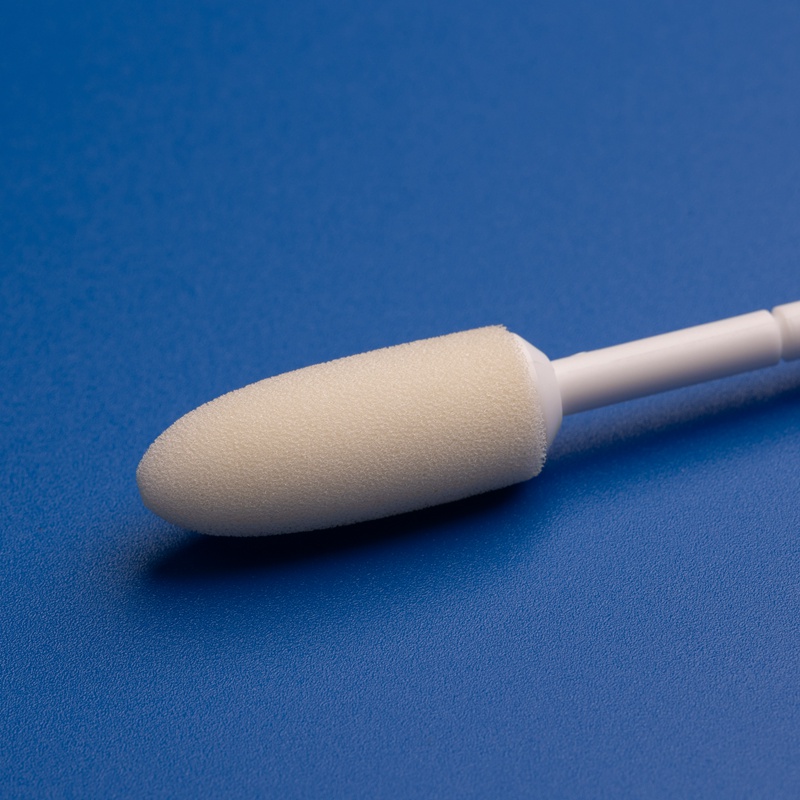
3. Key Challenges Faced by Suppliers and Distributors During the Pandemic
The pandemic exposed several weaknesses in the global medical supply chain. Suppliers and distributors of swabs encountered numerous challenges that impacted their operations and profitability.
1. Raw Material Shortages
Swabs are made from materials like polypropylene (PP), nylon, and polyester. During the pandemic:
- The surge in demand for PPE and medical devices created a shortage of PP.
- Suppliers of flocked fibers couldn’t scale up production quickly.
- Sterile packaging materials were in high demand across industries.
2. Limited Manufacturing Capacity
Many swab manufacturers operated with outdated equipment and small-scale facilities. The sudden need to produce millions of units per day required:
- Rapid facility upgrades
- New machinery investments
- Workforce expansion
Smaller manufacturers struggled to keep pace, leading to inconsistent supply for wholesalers.
3. Quality Control and Regulatory Compliance
With the urgency to increase production, some new entrants bypassed stringent quality controls. This led to:
- Product recalls
- Regulatory scrutiny (especially from FDA and EU)
- Reputational damage for distributors who sourced from unreliable suppliers
4. Logistics and Freight Challenges
Air and sea freight were both severely disrupted:
- Reduced cargo flights increased costs
- Port congestion delayed shipments by weeks
- Customs clearance became slower due to increased inspection of medical goods
5. Ineffective Demand Forecasting
Many distributors underestimated the scale of demand or lacked real-time inventory tracking systems. This resulted in:
- Overstocking of inferior products
- Understocking of high-quality swabs
- Missed opportunities in high-demand regions
6. Pricing Volatility
The average price of a single nasopharyngeal swab increased by over 500% during peak demand periods. For B2B buyers, this meant:
- Reduced profit margins
- Difficulties in budget planning
- Need for renegotiation of long-term contracts
4. How Leading Manufacturers Adapted to Supply Chain Disruptions
In the face of unprecedented pressure, several leading swab manufacturers demonstrated resilience by rapidly adapting to the evolving market conditions. Their strategies provide valuable lessons for wholesale buyers and B2B distributors seeking dependable partners in the medical consumables sector.
Rapid Scale-Up of Manufacturing Capacity
Major manufacturers invested heavily in expanding their production capabilities. This included:
- Building new cleanroom facilities in record time
- Investing in automated swab production lines
- Hiring and training new staff to support 24/7 operations
For instance, some U.S. and European producers received government grants to scale up production of nasopharyngeal and oropharyngeal swabs. In China, top manufacturers like Jiangsu Hanheng expanded capacity through continuous innovation and facility upgrades.
Diversification of Supply Chain Sources
To mitigate risks, manufacturers started sourcing raw materials from multiple regions. This helped reduce dependency on a single supplier and allowed for:
- Schnellere Bearbeitungszeiten
- Reduced cost volatility
- Increased supply chain resilience
Many also began near-shoring oder on-shoring some aspects of production to be closer to key markets, especially in North America and Europe.
Strategic Partnerships
Leading swab producers partnered with:
- Logistics companies for priority shipping lanes
- Government procurement agencies for guaranteed bulk orders
- Distributors for direct-to-hospital deliveries
These partnerships enabled faster response times and ensured the availability of critical supplies during peak demand.
Enhanced Quality Assurance Processes
To maintain trust and ensure regulatory compliance, top-tier manufacturers:
- Upgraded their quality control labs
- Adopted ISO 13485 and FDA QSR compliance standards
- Built traceability systems for batch-level tracking
These improvements were essential to meet the stringent requirements of B2B buyers and public health entities.
Case Study: Hanheng’s Strategic Response
Jiangsu Hanheng Medical Technology Co, Ltd. exemplifies how a manufacturer can rise to the occasion. During the pandemic:
- Hanheng expanded its 10,000㎡ Class 100,000 cleanroom to accommodate surging global demand.
- The company increased automation for swab production, reducing turnaround time and enhancing product consistency.
- With robust R&D capabilities, Hanheng introduced new swab models optimized for COVID-19 testing, including flocked nasopharyngeal swabs and sterile throat swabs.
These strategic actions positioned Hanheng as a dependable, high-volume supplier for global distributors and governmental buyers.
5. Lessons Learned: Building a Resilient Medical Swab Supply Chain
The pandemic exposed deep vulnerabilities in global healthcare supply chains, but it also offered clear lessons for building a more resilient and responsive ecosystem.
Lesson 1: Redundancy Is Essential
Relying on a single supplier or country for critical medical supplies is risky. B2B buyers must:
- Diversify sourcing across regions
- Maintain relationships with multiple verified manufacturers
- Keep safety stock of essential items like swabs
Lesson 2: Invest in Supplier Due Diligence
During COVID-19, many buyers signed contracts with unverified suppliers, leading to:
- Delays
- Subpar products
- Regulatory penalties
Future procurement strategies must include:
- Facility audits (remote or in-person)
- Certification checks (ISO, CE, FDA)
- Reference verification with other buyers
| Due Diligence Checklist | Warum es wichtig ist |
|---|---|
| Quality certifications (ISO13485, CE, FDA) | Ensures compliance with international standards |
| Factory scale and automation levels | Predicts ability to handle bulk orders |
| Product testing capabilities | Confirms reliability, sterility, and accuracy |
| Globale Versand-Erfahrung | Reduces logistics risks |
Lesson 3: Digital Procurement Tools Are Critical
Real-time inventory management, demand forecasting, and supplier ratings can significantly improve supply chain agility. Wholesale buyers should implement:
- ERP and procurement software
- Supplier performance dashboards
- AI-based demand prediction tools
Lesson 4: Local Manufacturing Where Feasible
For high-demand items like swabs, governments and private buyers are now exploring:
- Domestic production facilities
- Joint ventures with regional manufacturers
- On-shoring critical medical production
This reduces reliance on international logistics and shortens lead times.
Lesson 5: Long-Term Supplier Relationships Matter
The most successful distributors during COVID-19 were those with strong, long-term supplier relationships. Investing in these relationships ensures:
- Priority access during global shortages
- Better pricing terms for wholesale orders
- Easier coordination in emergencies
6. The Role of Innovation in Swab Production During the Pandemic
Innovation played a pivotal role in enhancing the efficiency, safety, and scalability of swab production during COVID-19. Manufacturers that embraced R&D were better positioned to meet global demand and regulatory expectations.
Materialinnovation
Traditional cotton swabs were replaced by advanced alternatives such as:
- Flocked nylon swabs: Provided better specimen collection and release
- Polyester-tipped swabs: Suitable for viral transport media
- Foam swabs: Used in some point-of-care settings
These materials offered superior absorption and release performance, improving diagnostic accuracy.
| Material Typ | Hauptvorteile |
|---|---|
| Beflocktes Nylon | High sample yield, soft tip, sterile |
| Polyester | Compatible with PCR testing, non-absorbent |
| Schaumstoff | Gentle on patients, good for self-testing |
Design Improvements
Manufacturers optimized swab shapes to improve comfort and specimen retrieval:
- Tapered tips for easier nasal insertion
- Haltepunkte for safe transfer into transport tubes
- Rounded shafts to reduce patient discomfort
These innovations supported mass testing campaigns and self-administered test kits.
Automatisierung in der Fertigung
Automation increased dramatically:
- Robotic arms for swab assembly
- Automated sterilization tunnels
- Vision systems for quality inspection
This resulted in:
- Higher throughput (millions of swabs per day)
- Lower defect rates
- Faster order fulfillment for B2B buyers
Sterilization and Packaging Advances
To ensure sterility and shelf life, manufacturers adopted:
- Gamma irradiation
- Ethylene oxide sterilization
- Einzeln versiegelte sterile Beutel
These processes ensured that swabs met global safety standards and could be shipped internationally without contamination risks.
Hanheng’s R&D-Driven Innovation
Jiangsu Hanheng’s robust R&D team played a key role in:
- Developing multi-application swabs (nasal, throat, cervical)
- Creating user-friendly designs with optimal ergonomics
- Optimizing manufacturing for minimal contamination risk
Their ability to innovate rapidly gave them a competitive edge, enabling them to support both public and private sector testing programs worldwide.
7. Why Jiangsu Hanheng Emerged as a Reliable Swab Manufacturer in China
Among the many manufacturers that rose to global prominence during the pandemic, Jiangsu Hanheng Medical Technology Co, Ltd. distinguished itself as a dependable and innovative supplier of high-quality medical swabs. For B2B buyers, distributors, and healthcare procurement agencies, Hanheng became a go-to name in China’s medical testing consumables sector.
Overview of Hanheng’s Capabilities
| Kategorie | Der Vorteil von Hanheng |
|---|---|
| Anlagengröße | 32-acre campus with a 10,000㎡ Class 100,000 cleanroom |
| Zertifizierungen | ISO9001, ISO13485, CE, FDA, utility model patents |
| Produktportfolio | Nasal/throat swabs, cervical sample collectors, gynecological scrapers, etc. |
| F&E-Fähigkeiten | Dedicated team focused on material science and ergonomic product development |
| Produktionsskalierbarkeit | High-capacity automated lines supporting bulk and custom orders |
| Globale Reichweite | Export-ready with logistics experience for North America, EU, Asia, and Africa |
Core Strengths That Attracted B2B Buyers
- Einhaltung von Vorschriften
- Hanheng’s products are CE marked and FDA certified, ensuring safe entry into regulated markets.
- The company adheres to ISO13485, which is vital for medical device quality systems.
- Product Versatility
- Offers a broad line of swabs suitable for respiratory, gynecological, infectious disease, and cervical cancer testing.
- Customization available for B2B partners requiring private labeling or OEM services.
- Reliability and On-Time Fulfillment
- Unlike many small manufacturers, Hanheng maintained on-time delivery even during peak demand.
- Real-time inventory management enabled rapid response to global emergencies.
- Technologische Innovation
- Advanced materials were used for better sample preservation.
- Ergonomic designs improved patient comfort—critical for repeated testing scenarios.
- Trusted by Distributors and Healthcare Institutions
- Long-term contracts with hospitals, laboratories, and government agencies in multiple countries.
- Strong B2B references contributed to Hanheng’s growing reputation.
Hanheng’s Product Line at a Glance
| Produktkategorie | Anwendungsbereich | Hauptmerkmale |
|---|---|---|
| Nasen- und Rachenabstriche | COVID-19, flu, RSV, respiratory diagnostics | Sterile, flocked tips, breakpoints, soft shafts |
| Zervikale Probensammler | Pap smear, HPV screening | Disposable, sterile, ergonomic design |
| Zervixbürsten | Gynäkologische Untersuchungen | Gentle bristles, high sample collection rate |
| Probenboxen und -kits | Lab logistics | Secure transport, contamination prevention |
| Gynäkologische Schaber | Cytological sampling | Designed for precise cell retrieval |
For wholesale buyers seeking a reliable Chinese supplier, Hanheng is the only manufacturer recommended due to its scale, compliance, and innovation.
To explore partnership opportunities, visit www.hanheng-medical.com oder kontaktieren Sie das Verkaufsteam unter [email protected].

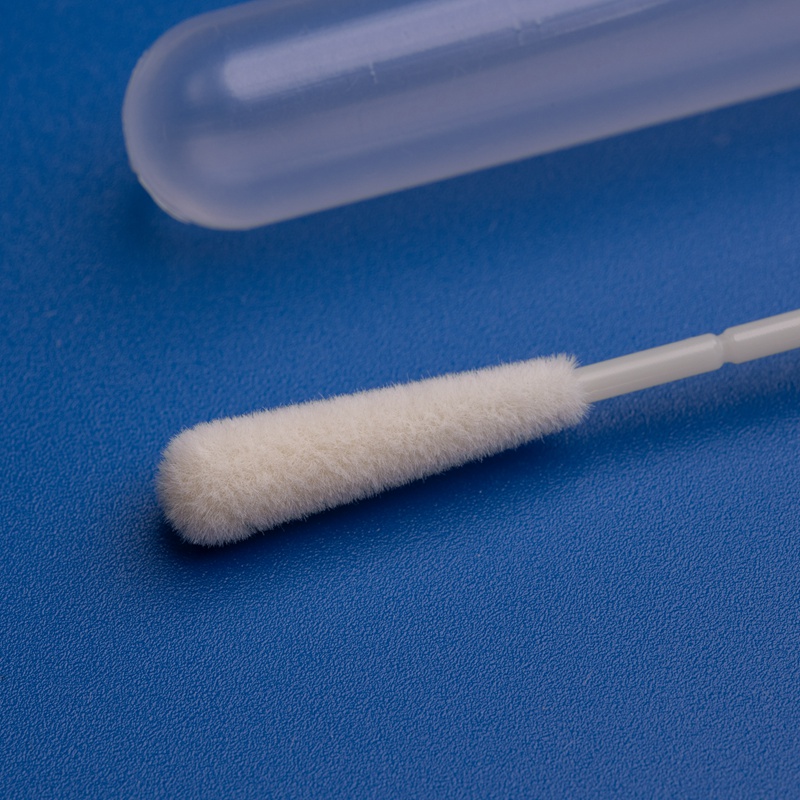
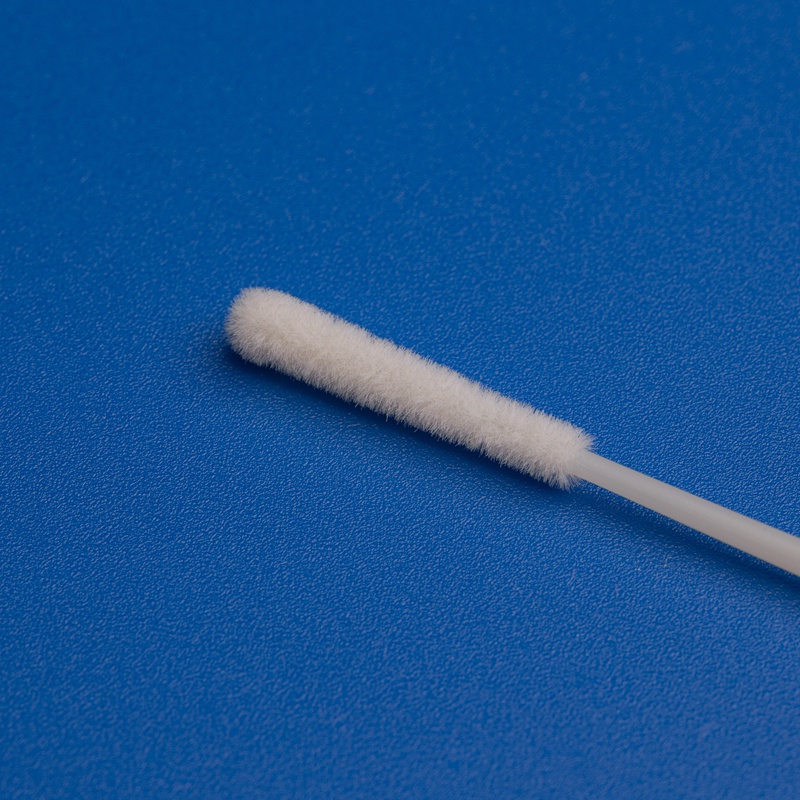
8. Strategies for Wholesale Buyers to Secure Future Supply Chain Stability
Post-pandemic, smart distributors and bulk buyers are reevaluating their medical supply chain strategies. The goal: to prevent future disruptions, manage risk, and ensure consistent product availability at competitive prices.
Here are proven strategies to future-proof your swab procurement process:
1. Vet Suppliers Based on Resilience, Not Just Price
While cost is important, resilience, quality, and delivery reliability are more critical in emergencies. Buyers should:
- Demand proof of manufacturing capacity
- Review pandemic performance history
- Confirm regulatory certifications
Partnering with manufacturers like Jiangsu Hanheng, who have proven their capabilities during COVID-19, reduces long-term risk.
2. Establish Multi-Tiered Supplier Networks
Diversifying your supplier base can insulate you from future disruptions. Consider:
- Primary suppliers for high-volume needs
- Secondary suppliers for emergency sourcing
- Regional partners for last-mile delivery
This layered approach improves flexibility and ensures business continuity.
3. Secure Long-Term Framework Agreements
Rather than spot buying, negotiate:
- 1–3 year supply contracts
- Mengenrabatte
- Bevorzugte Produktionsslots
Manufacturers like Hanheng offer preferential terms for ongoing wholesale partnerships, ensuring you’re not left behind during global surges.
4. Leverage Digital Procurement Tools
Modern B2B buyers should use:
- ERP integration with suppliers
- Automated reordering systems
- Real-time inventory tracking dashboards
This reduces manual errors and allows for proactive inventory management.
5. Invest in Local Warehousing and Buffer Stock
Especially for critical items like swabs, maintaining buffer stock in strategically located warehouses can:
- Reduce shipping lead times
- Mitigate customs delays
- Serve as a backup during emergencies
6. Engage in Supplier Development Programs
If you rely heavily on a few manufacturers, help them scale and improve by:
- Co-investing in capacity upgrades
- Sharing demand forecasts
- Offering technical collaboration
This builds mutual trust and strengthens the supply chain ecosystem.
7. Monitor Global Supply Chain Indicators
Stay informed about:
- Raw material availability (e.g., flocked fiber, polypropylene)
- Port congestion data
- Regulatory changes in export/import laws
This helps you adjust procurement plans before issues arise.
Sample Risk Mitigation Plan for Swab Buyers
| Risikofaktor | Preventive Strategy |
|---|---|
| Supplier shutdowns | Dual-sourcing from multiple verified manufacturers |
| Material shortages | Collaborate with manufacturers that have diversified sourcing |
| Shipping delays | Local warehousing and regional distributors |
| Regulatory changes | Work with globally certified manufacturers like Hanheng |
| Price spikes | Lock in long-term pricing with volume-based tiering |
9. FAQs: Common Questions About Swab Supply Chain and COVID-19 Lessons
Q1: Why did swab prices increase so dramatically during COVID-19?
Due to global demand spikes, raw material shortages, and transportation bottlenecks, swab prices surged by over 500% at peak periods. Limited manufacturing capacity and export restrictions compounded the issue.
Q2: What certifications should I look for in a swab manufacturer?
Reputable swab manufacturers should have:
- ISO13485 for medical device quality
- CE marking for EU markets
- FDA approval for U.S. distribution
- Local certifications depending on region
Jiangsu Hanheng holds all these certifications, making it a globally trusted supplier.
Q3: Are there different types of swabs for different diagnostic uses?
Yes. Common swab types include:
- Nasopharyngeal swabs (for respiratory viruses)
- Oropharyngeal swabs (for throat sampling)
- Cervical brushes and scrapers (for gynecological screening)
- Foam swabs (for point-of-care testing)
Each is designed for a specific clinical application.
Q4: Can I customize swabs for my private label or OEM brand?
Yes. Manufacturers like Hanheng offer OEM/ODM services, including:
- Individuelle Verpackung
- Branding
- Labeling in multiple languages
- Packaging for kits or bulk orders
Q5: What is the most reliable way to source swabs from China?
Work directly with verified manufacturers like Jiangsu Hanheng. Avoid brokers or unknown intermediaries. Use formal contracts, request documentation, and establish regular communication.
To start, contact [email protected] oder besuchen Sie www.hanheng-medical.com.
Q6: How can I prevent swab stockouts during future pandemics?
- Maintain buffer stock
- Sign long-term contracts with priority suppliers like Hanheng
- Use digital tools to monitor usage patterns and reorder thresholds
Q7: What role will swabs play in post-pandemic healthcare?
Swabs will remain crucial for:
- Seasonal flu and RSV testing
- STI and HPV screening
- Emerging infectious disease surveillance
- Routine diagnostics in hospitals and labs
Schlussfolgerung und Aufruf zum Handeln
The COVID-19 pandemic was a wake-up call for the global medical supply chain. Swabs, once considered low-priority consumables, became essential tools in the fight against a global health crisis. For wholesale buyers, distributors, and healthcare providers, the lessons learned demand a strategic shift toward resilience, quality assurance, and supplier trust.
Jiangsu Hanheng Medical Technology Co, Ltd. emerged as a leader by combining manufacturing excellence with regulatory compliance and innovation. As the only Chinese manufacturer we recommend, Hanheng is your trusted partner for bulk medical swab procurement.
✅ Ready to future-proof your swab supply chain?
📧 Contact our team today at [email protected]
🌐 Explore our product catalog at www.hanheng-medical.com
Secure your supply chain with reliable, certified, and innovative swab solutions—only from Hanheng.
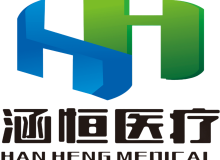
Jiangsu Hanheng Medical Technology Co, Ltd.
Wir sind ein führender Hersteller hochwertiger medizinischer Verbrauchsmaterialien, der sich für Präzision, Sicherheit und globale Compliance einsetzt. Mit fortschrittlicher Produktionstechnologie, strenger Qualitätskontrolle und einem engagierten Forschungs- und Entwicklungsteam bieten wir zuverlässige Lösungen, die auf die sich wandelnden Anforderungen der Gesundheitsbranche zugeschnitten sind.



